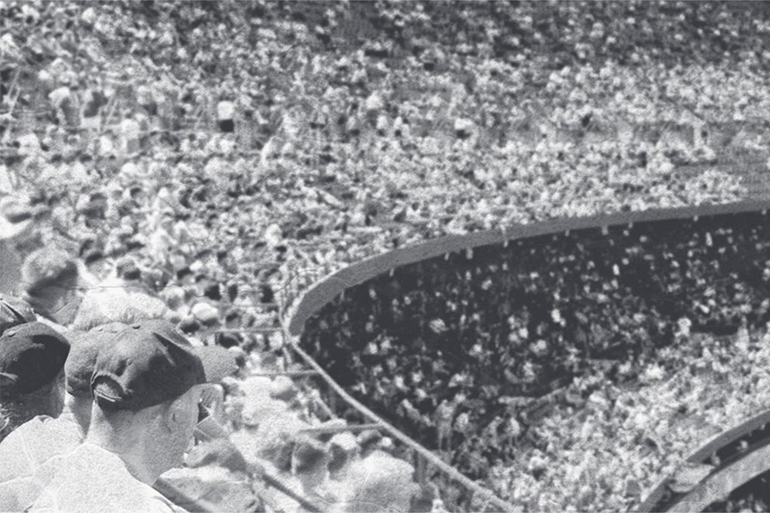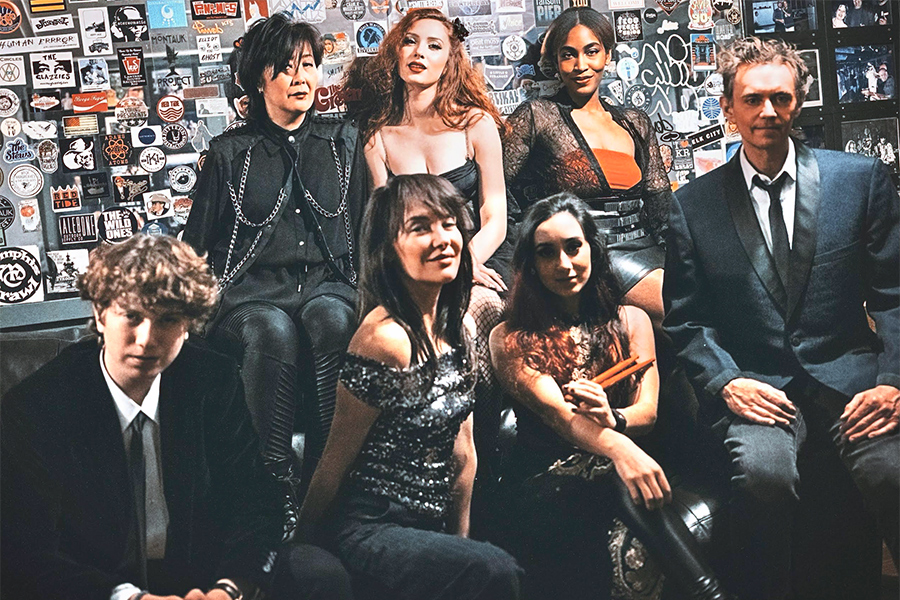1969: Watching the Full 15 Hours of the Miracle Mets World Series Win!

For five consecutive evenings a few weeks ago, I watched as the New York Mets beat the Baltimore Orioles in the 1969 World Series once again. This was the first World Series the Mets had ever won, and although I saw the end of the last game at the time, I had never seen all the games. Yes, it would be a project. But why not. I’m home quarantined. I could use a little cheering up.
I do remember the Mets leaping around the infield joyfully after the fifth and final game, which I watched “live in living color”—color TV was just coming into common use in 1969—while sitting on a stool in the downstairs bar at the 1770 House in East Hampton. With the last out, we all jumped around, shouting, slapping backs, spilling drinks, whooping and carrying on.
Well, now I watched it over five days, in the middle of a pandemic on SNY on my five-foot-wide flat-screen TV.
This 1969 World Series cemented the nickname “Amazin’ Mets,” and they are still called that today. But they had been called that long before that World Series. The team had been founded seven years earlier as an expansion team in the National League and, as they were given cast-off players by the other teams, they kept on losing and losing until they lost a record 120 games to finish 10th. Yes, there were 10 teams in the National League back then. The record of 120 defeats has never been equaled.
Also unequaled was the fact that for the next six seasons, they continued to finish 10th five times, and fans started calling them the “Amazin’ Mets” for all the negative records they were setting. It was sarcasm.
When it appeared 10th place was going to happen again in their seventh season, a fan in the bleachers—and I recall this very well—held up a bed sheet with spray paint reading “We don’t want a miracle. We just want Ninth.” Surprisingly, they rose to ninth. Now it was the year after that. And they had somehow scrambled into the World Series, a ragtag underdog who came roaring up from behind in the closing months of the season to snatch the pennant, and now would play what many considered one of the best baseball teams that ever played the game—the 1969 American League champion Baltimore Orioles.
So here’s what happened. Baltimore won the first game. They thought the rest would be easy. It wasn’t. The Mets won the next four. And that was that.
It was interesting to see how baseball was played back then. Much of it differed from how they do it today. The pitchers got the ball from the catcher and threw it back usually in less than 10 seconds. It seemed more like a game of catch then. Today the pitchers hem and haw, shake off a sign, go to the rosin bag, kick at the rubber, lean in, then finally get a pitch off.
The starters often pitched all nine innings back then, or nearly so. They didn’t seem tired at all doing that.
Strong winds would send the infield dust swirling into the eyes of the infielders in those days. Today they water the dirt every three innings.
The fans were different in 1969, too. In both stadiums, those attending the games were almost all white. In Baltimore the men wore suits and ties. In New York, the fans wore almost anything but suits and ties. And they were very unruly. A vast collection of napkins, paper cups, confetti and other debris collected on the outfield grass, in New York anyway, but not in Baltimore.
If the fans were mostly white, about one of five players on these two teams were African-American. Jackie Robinson had broken the color barrier nearly 20 years earlier. There were no Japanese players, though, and I recall that I saw only one Hispanic player.
The first two games, in Baltimore, were now replaying on my television in black-and-white, which made me think I was mistaken remembering I had watched the last game in color. But the last three games, which took place in New York, were in color, in some of the worst blurry footage imaginable, but color nevertheless—“living color,” as the NBC announcer Curt Gowdy said proudly. The reds were particularly vivid.
In the fifth and final game, a shimmering rainbow of a horizontal line spent five seconds slowly making its way from the top of the screen to the bottom at about 30-second intervals for the first two innings. Then it was gone.
“They probably whacked the side of the television camera with a fist,” I told my wife. “That’s how we fixed electronics back then.”
Surprisingly, the quality of play was about the same, then to now. Just fabulous. There was a towering home run in the last game by Baltimore Oriole Frank Robinson. There were diving catches all over the place, including three by Mets outfielders, one of which, by Tommy Agee in center field, cost the Orioles three runs that then led to their defeat in the fourth game.
There was a certain informality to the game then. Sweat would soak a pitcher’s cap brim. In the fifth game, a Baltimore player emerged from the dugout for his time at bat tucking his shirt into his pants, which he had neglected to do earlier.
And there were no helmets or any other safety gear like we see today for the batter, the catcher, or even the umps. Canvas covered the outfield walls. Hard on whoever ran into them, and several did.
At one point, Gowdy, said that 55,000 fans had paid $600,000 in total to be in attendance. That would be an average of $11 a ticket.
Stars of the game were, besides Agee, Bud Harrelson, Tom Seaver and a usually unremarkable Al Weis. Gil Hodges, who years earlier had played first base for the Brooklyn Dodgers, was just a great manager for the Mets this year. (The Mets’ first manager, Casey Stengel, who had won seven Worlds Series for the New York Yankees before being “retired” at age 70, once after a bad loss by the Mets in those earlier years famously said, “Can’t ANYBODY here play this game?”)
As we turned on the TV to watch the fifth and final game, I told my wife that I thought the Mets would take that last game because Baltimore surely would be very disheartened by the dramatic and fabulous plays at crucial moments by the Mets in the earlier four games.
“But you know that is going to happen,” she reminded me.
“Yeah,” I said lamely. “Well, I hope that happens.”
So of course, it did.
***
A few days ago, I read that baseball is thinking about starting a full schedule of games on July 4. Games will be played in empty stadiums, and the players for the most part will be at a social distance from one to the other, so this works.
It’s hard to imagine somebody hitting a ball over the wall of the stadium without everybody cheering, and I suppose the bigshots within baseball think either it will be done in silence or, for the millions watching on television, they will release recorded cheering at appropriate moments, as they used to do on TV long ago.
Neither silence nor recorded cheering sounds too appealing, though.
But here’s some thinking out of the box. For the last few months, all the people in America have been using Zoom to attend parties, dinners, weddings and funerals. I’ve been to a few of those, and if everybody talks, Zoom just sends it out as it comes in. It’s a cacophony of sound by talking heads until people settle down.
Can you imagine what Zoom would do to a ballgame? Somebody would hit a home run and all those little boxes of people in their living rooms would scream and cheer all at the same time—and this could be piped into the game and released as a roar of millions watching the game.
These millions of people cheering could also be broadcast over the loudspeakers at the empty stadiums themselves, to inspire the players.
Take it a step further and, using the Zoom settings, put the images of all those people in their homes into the empty stadium seats on TV. What a scene! Waving white handkerchiefs at the losers. Doing The Wave, cheering their hearts out, booing the umpires for bad calls.
This will work not only for baseball, of course, but also for football, basketball, hockey, Broadway, opera, concerts, political gatherings and everything else. And everybody is more than six feet away from everybody else, a lot more. How do I patent this idea?




